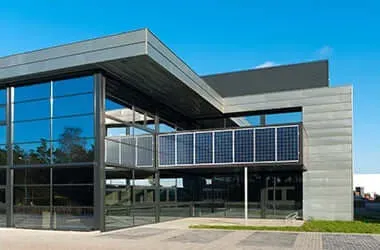- Industrial zone, South of Anping Town, Hengshui, Hebei, China.
- sales@hfpetromesh.com
- +86-18931809706
 Afrikaans
Afrikaans  Albanian
Albanian  Amharic
Amharic  Arabic
Arabic  Armenian
Armenian  Azerbaijani
Azerbaijani  Basque
Basque  Belarusian
Belarusian  Bengali
Bengali  Bosnian
Bosnian  Bulgarian
Bulgarian  Catalan
Catalan  Cebuano
Cebuano  Corsican
Corsican  Croatian
Croatian  Czech
Czech  Danish
Danish  Dutch
Dutch  English
English  Esperanto
Esperanto  Estonian
Estonian  Finnish
Finnish  French
French  Frisian
Frisian  Galician
Galician  Georgian
Georgian  German
German  Greek
Greek  Gujarati
Gujarati  Haitian Creole
Haitian Creole  hausa
hausa  hawaiian
hawaiian  Hebrew
Hebrew  Hindi
Hindi  Miao
Miao  Hungarian
Hungarian  Icelandic
Icelandic  igbo
igbo  Indonesian
Indonesian  irish
irish  Italian
Italian  Japanese
Japanese  Javanese
Javanese  Kannada
Kannada  kazakh
kazakh  Khmer
Khmer  Rwandese
Rwandese  Korean
Korean  Kurdish
Kurdish  Kyrgyz
Kyrgyz  Lao
Lao  Latin
Latin  Latvian
Latvian  Lithuanian
Lithuanian  Luxembourgish
Luxembourgish  Macedonian
Macedonian  Malgashi
Malgashi  Malay
Malay  Malayalam
Malayalam  Maltese
Maltese  Maori
Maori  Marathi
Marathi  Mongolian
Mongolian  Myanmar
Myanmar  Nepali
Nepali  Norwegian
Norwegian  Norwegian
Norwegian  Occitan
Occitan  Pashto
Pashto  Persian
Persian  Polish
Polish  Portuguese
Portuguese  Punjabi
Punjabi  Romanian
Romanian  Russian
Russian  Samoan
Samoan  Scottish Gaelic
Scottish Gaelic  Serbian
Serbian  Sesotho
Sesotho  Shona
Shona  Sindhi
Sindhi  Sinhala
Sinhala  Slovak
Slovak  Slovenian
Slovenian  Somali
Somali  Spanish
Spanish  Sundanese
Sundanese  Swahili
Swahili  Swedish
Swedish  Tagalog
Tagalog  Tajik
Tajik  Tamil
Tamil  Tatar
Tatar  Telugu
Telugu  Thai
Thai  Turkish
Turkish  Turkmen
Turkmen  Ukrainian
Ukrainian  Urdu
Urdu  Uighur
Uighur  Uzbek
Uzbek  Vietnamese
Vietnamese  Welsh
Welsh  Bantu
Bantu  Yiddish
Yiddish  Yoruba
Yoruba  Zulu
Zulu
- Afrikaans
- Albanian
- Amharic
- Arabic
- Armenian
- Azerbaijani
- Basque
- Belarusian
- Bengali
- Bosnian
- Bulgarian
- Catalan
- Cebuano
- Corsican
- Croatian
- Czech
- Danish
- Dutch
- English
- Esperanto
- Estonian
- Finnish
- French
- Frisian
- Galician
- Georgian
- German
- Greek
- Gujarati
- Haitian Creole
- hausa
- hawaiian
- Hebrew
- Hindi
- Miao
- Hungarian
- Icelandic
- igbo
- Indonesian
- irish
- Italian
- Japanese
- Javanese
- Kannada
- kazakh
- Khmer
- Rwandese
- Korean
- Kurdish
- Kyrgyz
- Lao
- Latin
- Latvian
- Lithuanian
- Luxembourgish
- Macedonian
- Malgashi
- Malay
- Malayalam
- Maltese
- Maori
- Marathi
- Mongolian
- Myanmar
- Nepali
- Norwegian
- Norwegian
- Occitan
- Pashto
- Persian
- Polish
- Portuguese
- Punjabi
- Romanian
- Russian
- Samoan
- Scottish Gaelic
- Serbian
- Sesotho
- Shona
- Sindhi
- Sinhala
- Slovak
- Slovenian
- Somali
- Spanish
- Sundanese
- Swahili
- Swedish
- Tagalog
- Tajik
- Tamil
- Tatar
- Telugu
- Thai
- Turkish
- Turkmen
- Ukrainian
- Urdu
- Uighur
- Uzbek
- Vietnamese
- Welsh
- Bantu
- Yiddish
- Yoruba
- Zulu
helideck safety net
Ensuring Safety on Helidecks The Importance of Safety Nets
Helidecks are critical infrastructures often found on oil rigs, ships, and other maritime vessels where helicopters land and take off. Given the high-risk environment associated with such operations, ensuring the safety of personnel and equipment is paramount. One of the essential components of helideck safety design is the safety net.
Safety nets play a crucial role in preventing accidents that may occur during landing or takeoff operations. Helicopter operations on helidecks come with inherent risks, including the potential for a helicopter to skid off the deck or for individuals to accidentally fall into open spaces. Safety nets act as a safety barrier to mitigate these risks by catching falling objects or personnel and preventing them from falling into the sea or onto lower decks.
Ensuring Safety on Helidecks The Importance of Safety Nets
One significant advantage of safety nets is their ability to provide visual guidance to helicopter pilots. The color and markings of safety nets can be designed to contrast sharply with the helideck’s surface, making it easier for pilots to identify boundaries and safe landing zones during challenging visibility conditions. This visual aid not only enhances landing precision but also contributes to overall helideck safety.
helideck safety net

In addition to their physical protective capabilities, safety nets can also serve a psychological function. Knowing that safety measures are in place can boost the confidence of both flight crews and personnel on the helideck. This increased confidence can lead to more focused and safer operations, reducing the likelihood of accidents and near-misses.
Training and drills are also an integral aspect of maintaining helideck safety. Workers and helicopter crews must be well-informed about the presence and purpose of safety nets. Regular training sessions can help personnel understand how to react in case of an emergency, thus maximizing the efficacy of safety nets and other safety measures in place.
Moreover, regular inspections and maintenance of safety nets are critical for ensuring their reliability. Over time, environmental factors such as saltwater exposure, UV radiation, and wear and tear can compromise the integrity of safety nets. Ensuring that these nets are in optimal condition is an ongoing process that involves periodic checks and, if necessary, replacing nets that show signs of deterioration.
In conclusion, safety nets are indispensable components of helideck safety systems. They protect personnel from falls, prevent accidents involving helicopters, and enhance visual guidance for pilots. By adhering to international safety standards, conducting regular training, and performing diligent maintenance checks, organizations can ensure that helidecks remain safe environments for helicopter operations. In an industry where safety is non-negotiable, investing in effective safety nets is not just a procedural requirement but a commitment to the well-being of all personnel involved in aviation activities.
-
Why Our Shaker Screen for Sale Stands Out in Every ApplicationNewsAug.08,2025
-
Unmatched Efficiency with Premium Shale Shaker Screen TechnologyNewsAug.08,2025
-
Reliable, Durable, and Cost-Effective: Press Locked Steel Grating SolutionsNewsAug.08,2025
-
Precision Strength with Welded Steel Bar GratingNewsAug.08,2025
-
Perimeter Safety Netting: The High-Strength Shield for Elevated Safety SolutionsNewsAug.08,2025
-
Maximize Performance with Steel Walkway GratingNewsAug.08,2025